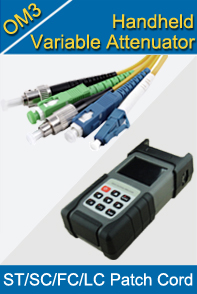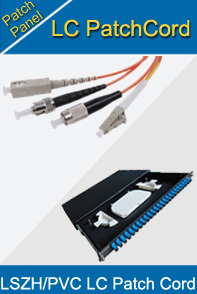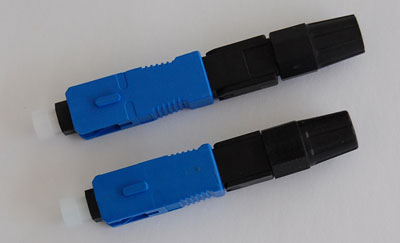-

- Sopto Home
-

- Special Topic
-

- Patch Cord Knowledge
-

- Knowledge about Fiber Optic Pigtails
Patch Cord Knowledge
- Fiber Optic Connector Ferrule Design
- Fiber Optic Connector Design
- E2000 to ST Fiber Patch Cable Overview
- Acceptable and Unacceptable Fiber Connector End-Face Finishes
- Using Wipes and Cleaning Cassettes to Clean Fiber Patch Cords
- Not-Too-Tight Mating of Fiber Optic Connectors
- Matching Gel and Oils Contamination about Fiber Optic Connectors
- The Effect of Improper Use of Fiber Optic Connectors
- Why Fiber Optic Connectors are Fragile?
SOPTO Special Topic
Certificate



Guarantee
Except products belongs to Bargain Shop section, all products are warranted by SOPTO only to purchasers for resale or for use in business or original equipment manufacturer, against defects in workmanship or materials under normal use (consumables, normal tear and wear excluded) for one year after date of purchase from SOPTO, unless otherwise stated...
Return Policies
Defective products will be accepted for exchange, at our discretion, within 14 days from receipt. Buyer might be requested to return the defective products to SOPTO for verification or authorized service location, as SOPTO designated, shipping costs prepaid. .....
Applications
 Fiber Patch Cords have a widely application. Where the need for the optical fiber connection, where you need fiber optic patch cords.
Fiber Patch Cords have a widely application. Where the need for the optical fiber connection, where you need fiber optic patch cords.
Testing Equipment
FTTX+ LAN
Optical Fiber CATV
Optical Communication System
Telecommunication
SOPTO Products
- Fiber Optic Transceiver Module
- High Speed Cable
- Fiber Optical Cable
- Fiber Optical Patch Cords
- Splitter CWDM DWDM
- PON Solution
- FTTH Box ODF Closure
- PCI-E Network Card
- Network Cables
- Fiber Optical Adapter
- Fiber Optical Attenuator
- Fiber Media Converter
- PDH Multiplexers
- Protocol Converter
- Digital Video Multiplexer
- Fiber Optical Tools
- Compatible
Related Products
Performance Feature
Good Water-proof
Low insertion loss;
low reflection loss;
Stability, good repeatability;
High-precision ceramic ferrule;
Compatible with NTT standard;
Precision Grinding and fully testing;
Compliance with international standards
Patch Cord Knowledge
Recommended


Knowledge about Fiber Optic Pigtails
Much about the tech jargon, some people don’t know its meaning. Such as fiber optic pigtails, fiber pigtail is a piece of fiber optic cable with only one fiber optic connector on one side of the cable, there are single mode and multimode fiber optic pigtails, which can be with various types of fiber optic terminations such as SC, FC, ST, LC, MU, MT-RJ, MTP, MPO, etc. the fiber optic pigtail with connector side is used to link the equipment, while the other side of the pigtail is melted together with the fiber cable, by melting together the fiber glasses, it can reach a minimum insertion loss. Fiber optic pigtails are usually used with fiber optic management equipment like ODF, splice closures and cross cabinets.
.jpg)
Common types of fiber optic pigtails are usually with 0.9mm fiber cable diameter, and usually installed inside ODF unit. Most commonly used types are SC fiber optic pigtail, ST fiber optic pigtail, FC fiber optic pigtail, LC fiber optic pigtail, MT-RJ fiber optic pigtail, SC/APC fiber optic pigtail, FC/APC fiber optic pigtail and E2000 fiber optic pigtail. They are single mode types and multimode types.

A fiber pigtail is really a single, short, usually unbuffered, optical fiber which has an optical connector pre-installed on one end along with a period of exposed fiber in the other end. The end of the pigtail is stripped and fusion spliced to a single fiber of a multi-fiber trunk. Splicing of pigtails to each fiber within the trunk “breaks out” the multi-fiber cable into its component fibers for connection to the end equipment.
Fiber pigtails can have female or male connectors. Female connectors might be mounted in a patch panel, often in pairs although single-fiber solutions exist, to allow them to be connected to endpoints or other fiber runs with patch fibers. Alternatively they can have male connectors and plug directly into an optical transceiver.
As the fibers must have connectors fitted before they can affix to other equipment. Fiber pigtails may be one of the common solutions for fiber cable termination, the inclusion of connectors to every optical fiber in a cable.
According to the ITU-T (International Telecommunication Union Telecommunication) standardization organization, fiber optic pigtails are categorized into Fiber pigtail that conforms to G.652 and G.653 fiber splicing technology standard. Fiber optic splicing technology is primarily to use a fiber splicing machine to fuse splice the fiber with fiber or the fiber with fiber pigtails. In this process, the bare fibers of the fiber optic cables are fuse spliced with the fiber pigtails to become a whole. With the fiber optic connector at one end of the fiber pigtails, they are connected to fiber optic transceivers; the optical fibers connected with the twisted pairs, and then connect with the information outlets.
Main tools used in the fiber splicing technology include fiber termination box, fiber optic converter, fiber optic transceiver, fiber pigtail, optical fiber coupler, fiber stripper, and fiber optic cleaver, etc. Currently fiber optic pigtail with SC, ST, FC, LC MT-RJ, SC/APC, FC/APC, E2000 fiber optic connectors are available in the market.
For more products’ information, please contact a Sopto representative by calling 86-755-36946668, or by sending an email to info@sopto.com.



